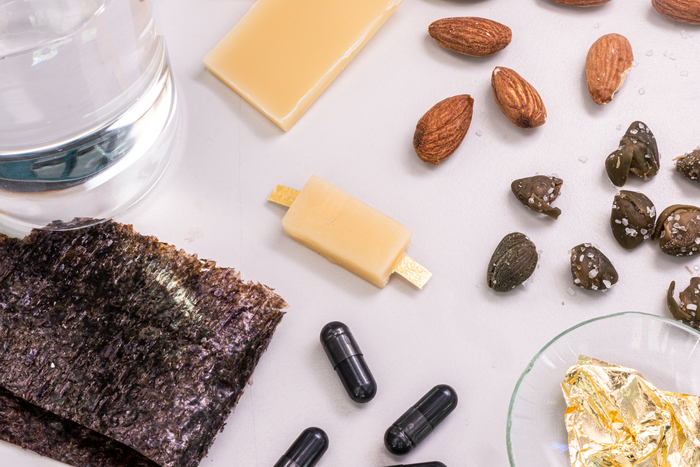Vitamin B2, activated carbon and nori seaweed: these are some of the ingredients of the first rechargeable and edible battery.
The prototype was built in Italy, in the Italian Institute of Technology (Iit) in Milan, and is described in the journal Advanced Materials.
The battery you can eat is the first result of a recent and rapidly growing field of research, such as
edible electronics
, and thus paves the way for a new generation of electronic devices.
In the future, for example, the new batteries will be able to power diagnostic tools or to check the quality of food, or even to power future edible robots.
The new battery was born in the Printed and Molecular Electronics Laboratory of the IIT directed by Mario Caironi and with the support of funding from the European Research Council (ERC).
Co-author of the study is Ivan Ilic, from the same laboratory.
The battery developed by Caironi's group is based on components such as
riboflavin
, better known as vitamin B2, which acts as an anode, and
quercetin
contained in almonds and capers which acts as a cathode.
To increase the electrical conductivity, a very common over-the-counter drug such as activated carbon
was then used , while the electrolyte of this prototype is
water
-based
.
The separator, needed in every battery to avoid short circuits, was made with
nori seaweed
, commonly used in the preparation of sushi.
Finally, the electrodes were encapsulated in
beeswax
from which emerge, starting from a cellulose-derived support, two
edible gold
contacts , the same film sometimes used by pastry chefs for decorations.
The battery cell operates at 0.65V, a voltage low enough not to harm the human body if ingested.
It can supply a current of 48 milliamperes for 12 minutes, or a few microamperes for more than an hour, sufficient to power small electronic devices, such as low-power LEDs.
For Caironi, "potential future uses include edible circuits and sensors, capable of monitoring health conditions but also the state of conservation of food. Furthermore, given the high level of safety of these batteries, these technologies could also be used in "toys for younger children, where the risk of ingestion is high. In fact, we are already developing devices with higher capacity and smaller dimensions."
According to Ilic "this edible battery is also very interesting for those who study and design energy accumulators. The construction of safer batteries, without the use of toxic materials, is a challenge we must face: even if these batteries will not power cars electricity, are proof that it is possible to build power sources with materials that are safer than current lithium-ion batteries, so we believe they will inspire other scientists to build safer batteries for a truly sustainable future."

